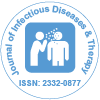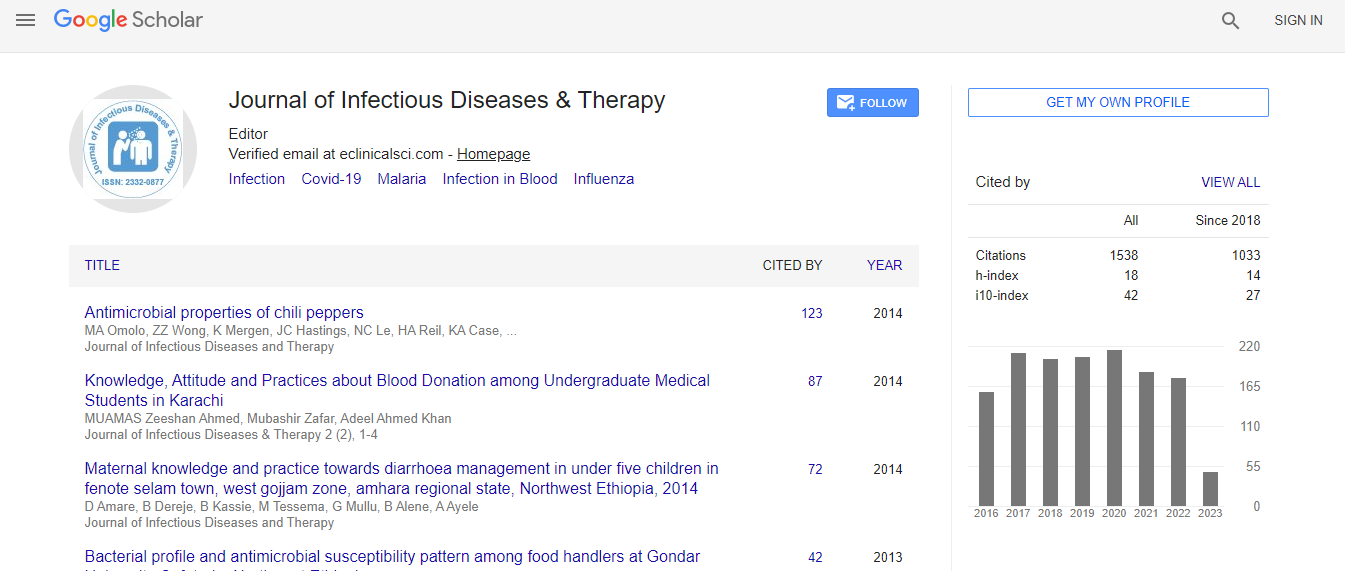Our Group organises 3000+ Global Conferenceseries Events every year across USA, Europe & Asia with support from 1000 more scientific Societies and Publishes 700+ Open Access Journals which contains over 50000 eminent personalities, reputed scientists as editorial board members.
Open Access Journals gaining more Readers and Citations
700 Journals and 15,000,000 Readers Each Journal is getting 25,000+ Readers
Google Scholar citation report
Citations : 1529
Journal of Infectious Diseases & Therapy received 1529 citations as per Google Scholar report
Indexed In
- Index Copernicus
- Google Scholar
- Open J Gate
- RefSeek
- Hamdard University
- EBSCO A-Z
- OCLC- WorldCat
- Publons
- Euro Pub
- ICMJE
Useful Links
Recommended Journals
Related Subjects
Share This Page
Addressing the double burden of disease: Improving health systems for Non-communicable and Neglected Tropical Diseases
Joint Event on 4th Annual Congress on Infectious Diseases & 5th International Conference on Neglected Tropical & Infectious Diseases
Jha N, Sharma SK and Singh SB
B P Koirala Institute of Health Sciences, Dharan
Posters & Accepted Abstracts: J Infect Dis Ther
Abstract
Background and Aim: Because of chronic nature, Non- Communicable Diseases and Neglected Tropical Diseases are known to cause the burden on the household and individual. The primary health care response to them has lacked adequate response. This study establishes a baseline regarding current non-communicable diseases (diabetes and hypertension) and leprosy management in Nepal at policy, health system and community levels and suggests relevant and contextually adapted interventions. Methods: Policy analysis included policy documents review, stakeholder mapping, and qualitative interviews with 12 key stakeholders. Mixed-methods data collection techniques included interviews with 162 interviewees at macro, meso and micro level. The study sites were Baniyani and Itahari of Sunsari district. Fifteen focus group discussions, 36 in-depth interviews, and survey of 1209 households (Baniyani) and 1650 households (Itahari) were done. The study period was from 2016 to 2017. Co-creation process engaging stakeholders at community and macro level through consultations produced suggestions. Prioritization of the suggestions yielded intervention to refine further. Results: Nepal has been followings ever policies and technical guidelines developed by WHO. The utilization of services in the primary health care center for diabetes and hypertension is low as compared to leprosy. Both the supply side and demand side barriers existed with regard to diabetes and hypertension. In Baniyani, more people were illiterate, below the poverty line with the expenditure exceeding the available resources. Most of them visit Primary Health Center. In Itahari, fewer people were illiterate and below the poverty line. Most people used to visit private hospitals as compared to Primary Health Center. Hypertension (29.6%) and diabetes (12.7%) in Itahari and hypertension (12.3%) diabetes (11.6%) in Baniyani were reported. The synthesized suggestions forwarded for interventions were as the engagement of key stakeholders on diabetes, hypertension, and leprosy, for the improvement in the management of those diseases at studied PHC level. Conclusion: The areas for improvement of policy, health system and community level are opportunities for a better case of diabetes and hypertension through an assistance from refined relevant interventions.Biography
E-mail: jhanilambar60@gmail.com

 Spanish
Spanish  Chinese
Chinese  Russian
Russian  German
German  French
French  Japanese
Japanese  Portuguese
Portuguese  Hindi
Hindi 